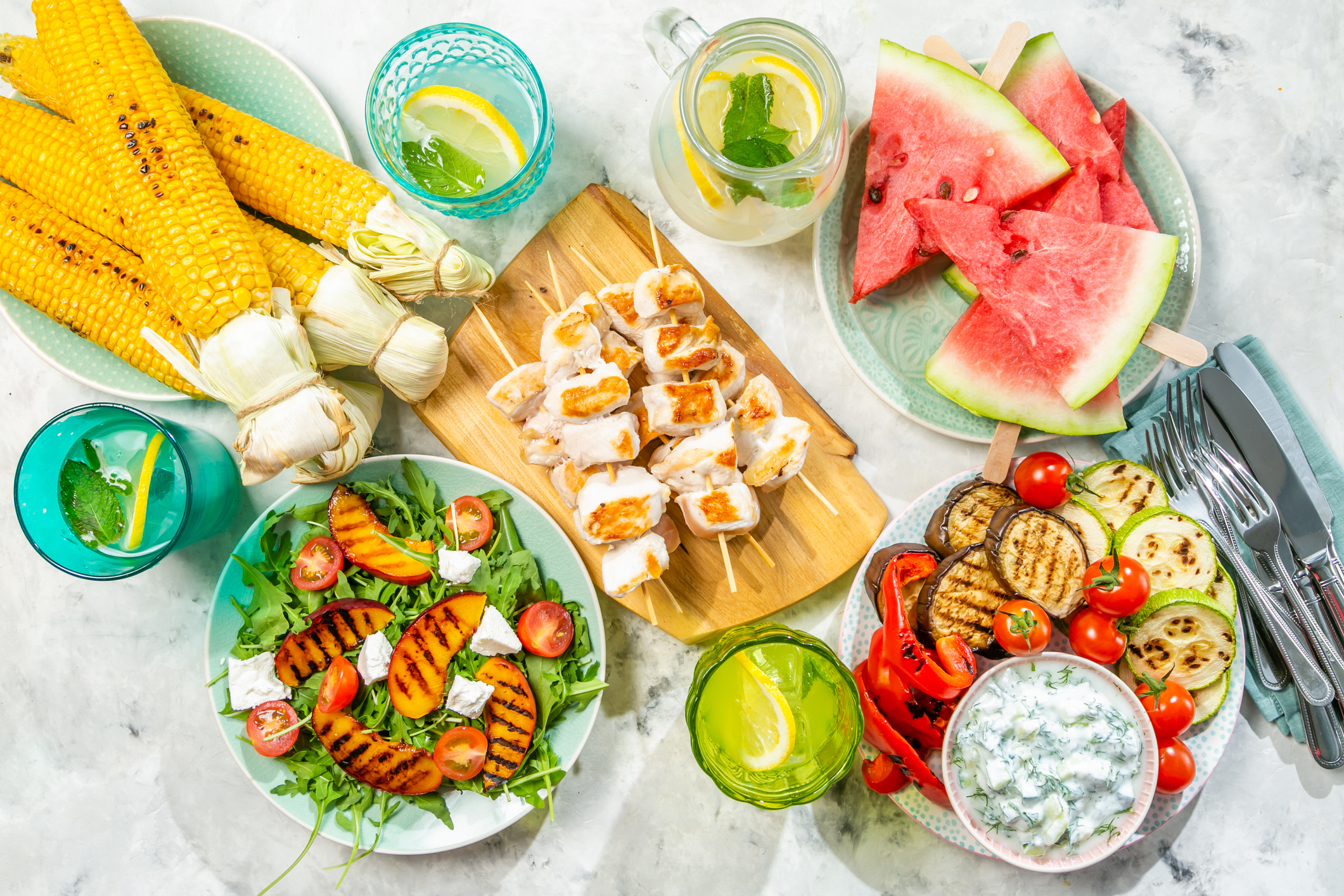
Grilling is a summer classic enjoyed by many. ¡Una de las ventajas del asado es que puede asar la gran mayoría de los alimentos! Burgers, chicken, seafood, vegetables… they're all delicious when cooked on the grill. But did you know that there are food safety steps to follow no matter what you're cooking? Keep reading to learn about safe grilling of ALL foods.
Safe Food Prep for Grilling
Clean: No matter what you’re grilling, always start with clean hands. You should especially wash your hands before and after touching raw meat, poultry and seafood items to prevent the spread of foodborne illness bacteria. When it comes to washing food items, you should wash some, but not others:
- Always wash fruits and vegetables before preparing. Run fruits and vegetables under clean, running water and gently rub to remove any debris. If you are using firm fruits and vegetables, such as melons and zucchini, use a vegetable brush to scrub. Dry fruits and vegetables with a clean cloth or paper towel to further reduce bacteria that may be present.
- Never wash or rinse meat, poultry or seafood items. Doing so greatly increases your risk of cross-contamination because bacteria can be spread to other foods, utensils and surfaces. If you must rinse your meat or poultry because of a marinade or brine, be sure to thoroughly clean and then sanitize all surfaces, including the inner sink, to eliminate the risk of cross-contamination.
Separate: Always keep your raw meat, poultry and seafood items separate from ready-to-eat foods, such as salads, dips and even any fruits and vegetables you plan on grilling. As soon as you put raw items on the grill, get a clean plate or serving dish ready for when the items are done. You should also pay attention to the utensils used while grilling – those tongs you used to place those raw burgers on the grill could be contaminated with harmful bacteria, which could spread to the fully cooked burgers being pulled off the grill. Ultimately, it is NOT safe to use the same plate or utensils you originally used to place raw items on the grill, unless they have been fully washed and sanitized.
How To Grill Meat, Chicken, and Fish
Grilling uses direct high heat to cook items - it's what gives them the classic grill marks that everyone loves to see. However, those marks can make items look done before they actually are. This can be a major safety issue! When grilling meat, poultry and fish, it's important to use a food thermometer to make sure your items are truly being cooked through to a safe minimum internal temperature.
The recommended safe internal temperature varies depending on the product you’re cooking, so use this handy list to know what yours should reach:
- Beef, pork, lamb and veal (steaks, roasts and chops): 145°F (63°C) (with a 3-minute rest time)
- Ground meats (including burgers and hot dogs): 160°F (71°C)
- Whole poultry, poultry breasts and ground poultry: 165°F (74°C)
- Fish: 145°F (63°C)
For information on fully cooking other seafood products, including shrimp, you can view this Safe Minimum Cooking Temperatures Chart.
How To Grill Fruits and Vegetables
When grilling fruits and vegetables, there are a few things to keep in mind:
- Marinating vegetables is a great way to infuse flavor and moisture into your vegetables before cooking on the grill – but never use leftover marinade that has been used for raw meat, poultry or seafood items.
- While fruits and vegetables may not have to reach a safe minimum internal temperature the same way meat, poultry and seafood do, different fruits and vegetables will have different cooking times. Thicker cut fruits and vegetables, and denser vegetables (such as potatoes), will take longer to cook. Because of the high heat of the grill, this can result in a thoroughly cooked outside but an uncooked inside of the fruit or vegetable. For more even cooking, cut fruits and vegetables into smaller pieces and use a medium to low grill temperature. For thinner sliced fruits and vegetables, turn them often and pay attention to when they may be done so you don't end up with burnt fruits and veggies.
Have questions?
Talk to a food safety expert and get answers to your questions about grilling.
- For non-meat food products (cereals, fish, produce, fruit juice, pastas, cheeses, etc.), call the FDA at 1-888-SAFEFOOD (1-888-723-3366).
- For meat, poultry and egg products, call the USDA Meat and Poultry Hotline at 1-888-MPHotline (1-888-674-6854).

